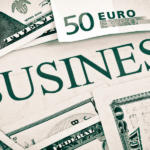TikTok has emerged as a significant cultural and economic force, shaping consumer behavior through its unique blend of entertainment and commerce. While the platform initially gained traction for its short-form videos and viral dance challenges, it has evolved into a marketplace where creativity intersects with consumerism. This shift highlights how trends on TikTok not only entertain but also drive purchasing decisions in unexpected ways. The unconventional products showcased on the platform, ranging from practical to bizarre, illustrate its ability to captivate a diverse audience. TikTok’s influence, particularly among Millennials and Gen Z, underscores its pivotal role in modern e-commerce.
Why are TikTok users drawn to niche products?
The platform’s appeal lies in its ability to create viral moments that blend humor, curiosity, and practicality. Products like glow-in-the-dark toilet paper and USB-powered narwhal slippers exemplify this trend, providing both functionality and novelty. TikTok creators and influencers amplify these products through engaging content, offering them a platform to reach millions of users. According to PYMNTS research, 79% of Millennials and Gen Z consumers rely on social media for financial advice, and their purchasing habits are significantly shaped by influencers. This unique ecosystem fosters a cycle where curiosity leads to virality, ultimately driving sales.
Can TikTok trends sustain long-term purchasing behavior?
While trends on TikTok often appear fleeting, their impact on commerce can be lasting. Items like Nicolas Cage sequin pillows and edible gold lollipops, while seemingly niche, tap into cultural and emotional triggers that resonate with consumers. For instance, the “DIY Cricket Snack Kit” appeals to those curious about sustainable protein sources, while “Mermaid Tail Blankets” cater to users seeking fun and comfort. Such products combine novelty with a sense of personalization, making them memorable. By leveraging TikTok’s algorithmic reach and user engagement, these items achieve visibility that traditional advertising struggles to replicate.
Concerns over TikTok’s future in the U.S. add a layer of complexity to its influence. The platform has faced scrutiny over national security risks, with discussions around bans surfacing frequently. Despite this, TikTok creators and businesses have demonstrated resilience by continuing to innovate within its ecosystem. Historically, social media platforms like Instagram and Facebook have played similar roles in influencing shopping trends, but TikTok’s short-form content and algorithm-driven personalization set it apart as a potent driver of niche product sales.
TikTok’s marketplace also reflects a broader shift in how consumer decisions are made. Traditional retail often relies on static advertising, whereas TikTok leverages interactive and humorous content to connect users with products. This dynamic is evident in the popularity of items like “Potato Pal,” a service that prints personal messages on potatoes, and the “Banana Phone,” a Bluetooth-enabled device shaped like a banana. Although these items may seem whimsical, their success reveals the power of blending creativity with commerce.
TikTok’s marketplace success illustrates the importance of adapting to digital consumer habits. This adaptability is especially relevant as more people rely on social media for entertainment and shopping. While unusual products dominate the spotlight, their ability to captivate and engage demonstrates TikTok’s role in reshaping e-commerce. As consumers become more accustomed to blending entertainment with purchasing, platforms like TikTok will remain influential, provided they address regulatory concerns and maintain user trust.
TikTok’s unconventional marketplace underscores how social media platforms are reshaping consumer culture. Its ability to transform quirky trends into commercial successes reflects the evolving nature of e-commerce. By fostering a space where creativity thrives, TikTok has positioned itself as a hub for niche products that resonate with younger audiences. However, its future influence will depend on balancing innovation with regulatory compliance, ensuring its sustainability as a cultural and economic driver.










